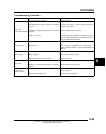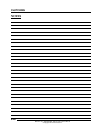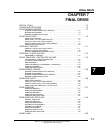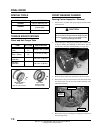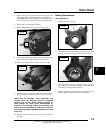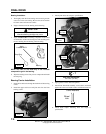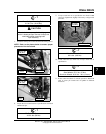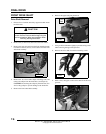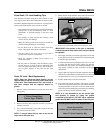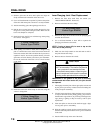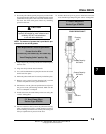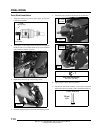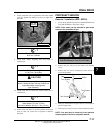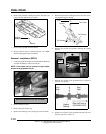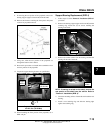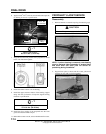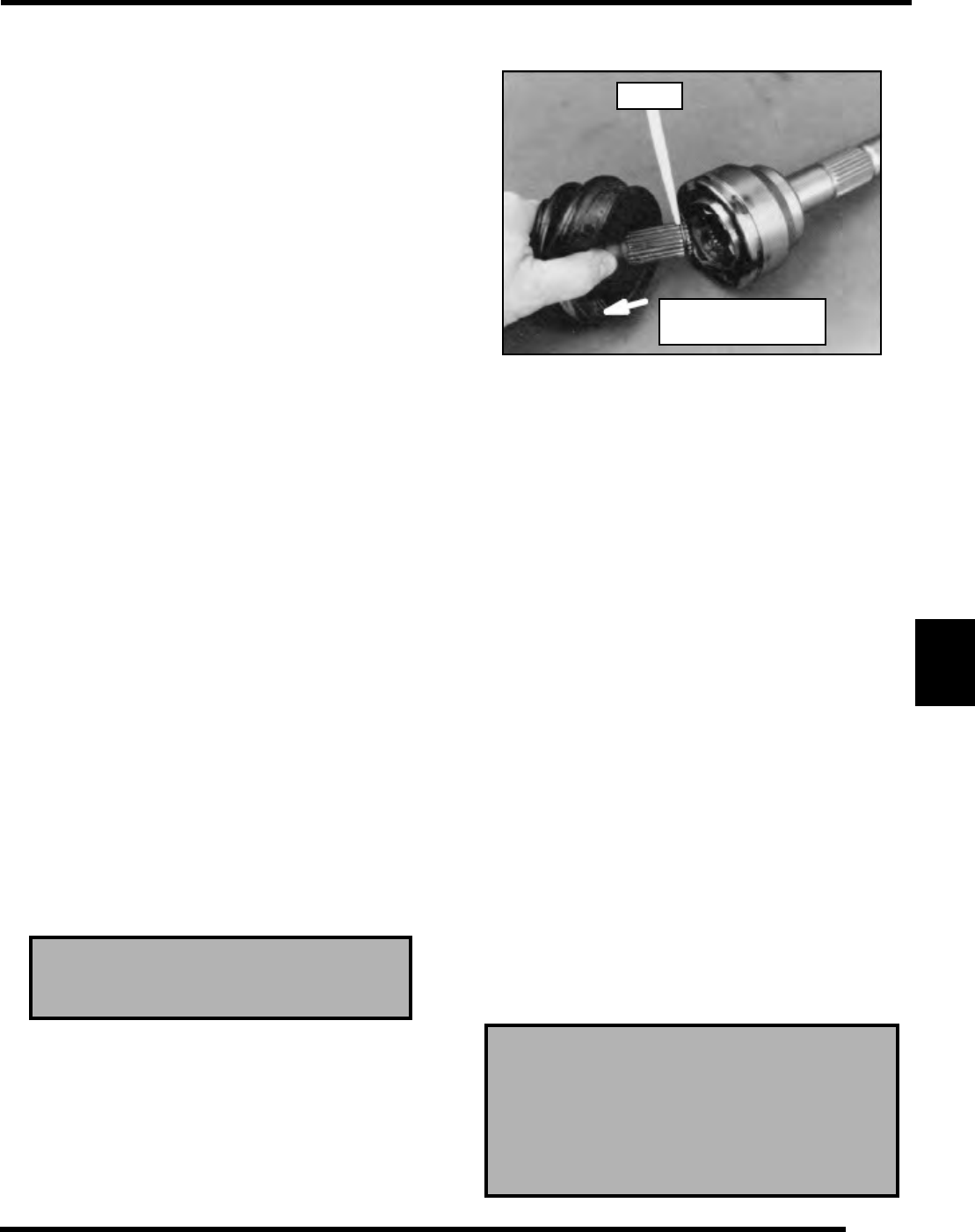
7.7
FINAL DRIVE
7
9923142 - 2011 RANGER RZR / RZR S / RZR 4 Service Manual
© Copyright 2010 Polaris Sales Inc.
Drive Shaft / CV Joint Handling Tips
Care should be exercised during drive shaft removal or when
servicing CV joints. Drive shaft components are precision parts.
Cleanliness and following these instructions is very important to
ensure proper shaft function and a normal service life.
• The complete drive shaft and joint should be handled by
getting hold of the interconnecting shaft to avoid
disassembly or potential damage to the drive shaft
joints.
• Over-angling of joints beyond their capacity could
result in boot or joint damage.
• Make sure surface-ground areas and splines of shaft are
protected during handling to avoid damage.
• Do not allow boots to come into contact with sharp
edges or hot engine and exhaust components.
• The drive shaft is not to be used as a lever arm to
position other suspension components.
• Never use a hammer or sharp tools to remove or to
install boot clamps.
• Be sure joints are thoroughly clean and that the proper
amount and type of grease is used to refill when joint
boots are replaced and when joints are cleaned. Refer to
text for grease capacity of CV joints and CV joint
boots.
Outer CV Joint / Boot Replacement
NOTE: Refer the “Electronic Parts Catalog” for the
required parts to service the drive shaft. Some drive
shafts have “Boot Replacement Kits” that include a
new boot, clamps, and the required amount of
grease.
1. Remove clamps from rubber boot using the proper boot
clamp pliers.
2. Remove the large end of the boot from the CV joint and
slide the boot back.
3. Use a soft-faced hammer or brass drift to separate the outer
CV joint from the drive shaft.
NOTE: If using a brass drift, be sure to tap on the
inner race of the joint only.
4. Make sure the circlip remains on the shaft and not left in
the joint. Discard the circlip as it will be replaced.
5. Remove the small clamp and boot from the drive shaft.
IMPORTANT: If the grease in the joint is obviously
contaminated with water and/or dirt, the joint should
be replaced.
6. Thoroughly clean the joint with an appropriate solvent and
dry the joint to prevent any residual solvent from being left
in the joint upon reassembly.
7. Visually inspect the joint by tilting the inner race to one side
to expose each ball. Severe pitting, galling, play between
the ball and its cage window, any cracking or damage to the
cage, pitting or galling or chips in raceways call for joint
replacement.
8. Apply a light coat of grease to the end of the drive shaft and
slide the new clamp and boot (small end first) over the shaft
and position the boot in its groove machined in the shaft.
9. Install a NEW circlip on the end of the shaft.
10. Grease the joint with the special CV joint grease provided
in the boot replacement kit. Fill the cavity behind the balls
and the splined hole in the joint’s inner race. Pack the ball
tracks and outer face flush with grease. Place any remaining
grease into the boot. Install small boot clamp.
NOTE: It is very important to use the correct type
and quantity of grease by using the grease
contained in the boot kit. DO NOT use a substitute
grease and DO NOT overfill or under fill the CV joint.
CV Boot Clamp Pliers:
Earless Type - 8700226
Boot Replacement Grease Requirement:
Grease Service Kits
PN 1350059 (20g) / PN 1350046 (30g) / PN 1350047 (50g)
Outer CV Joint Capacity: 80g
Circlip
Pull shaft to remove
from CV joint



